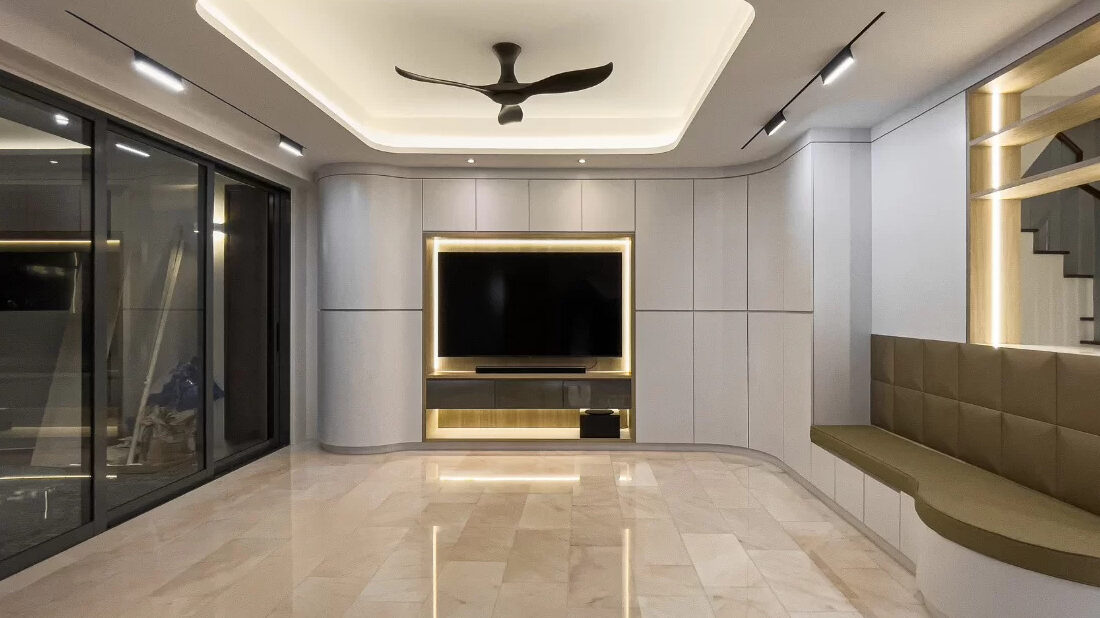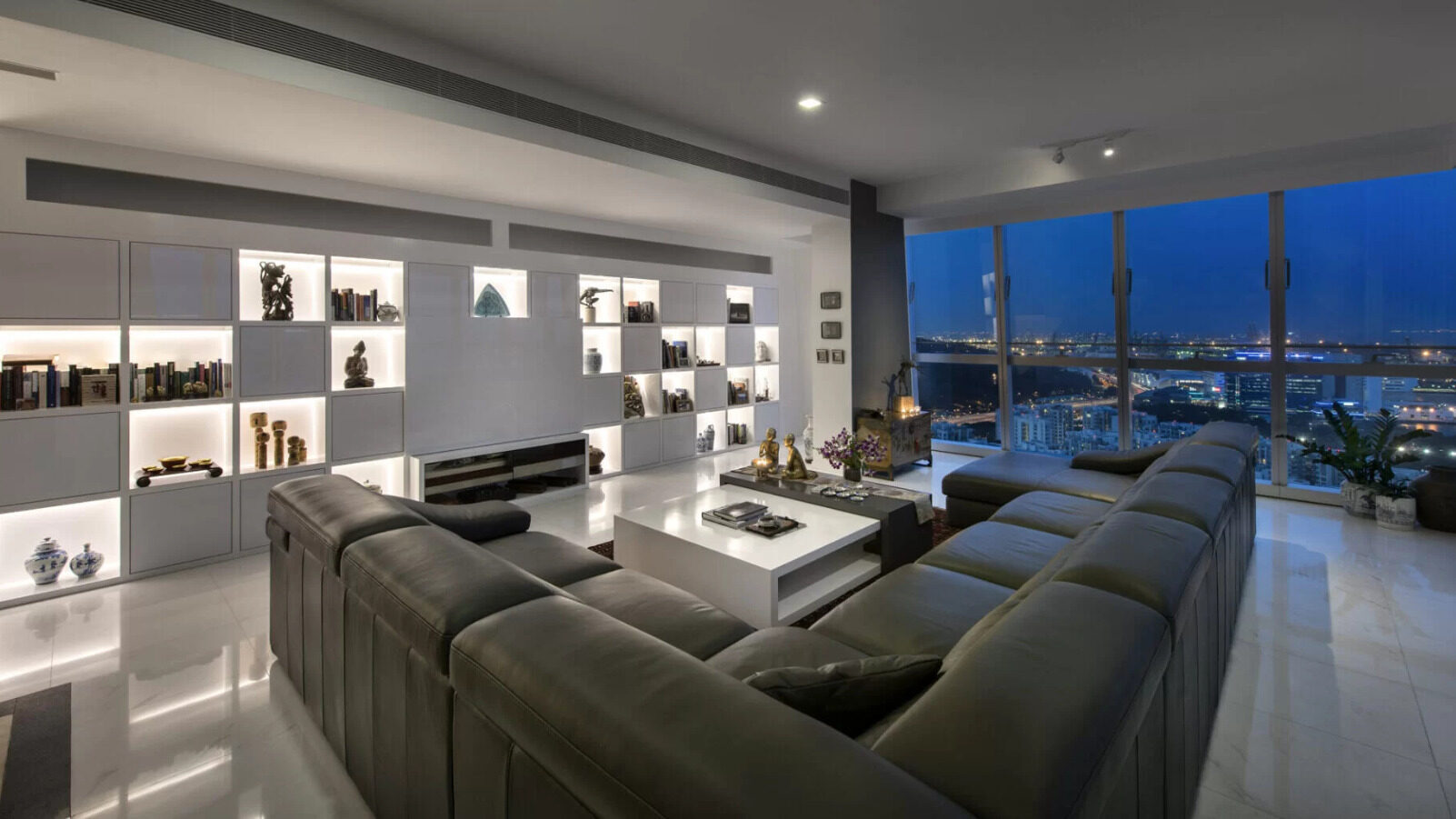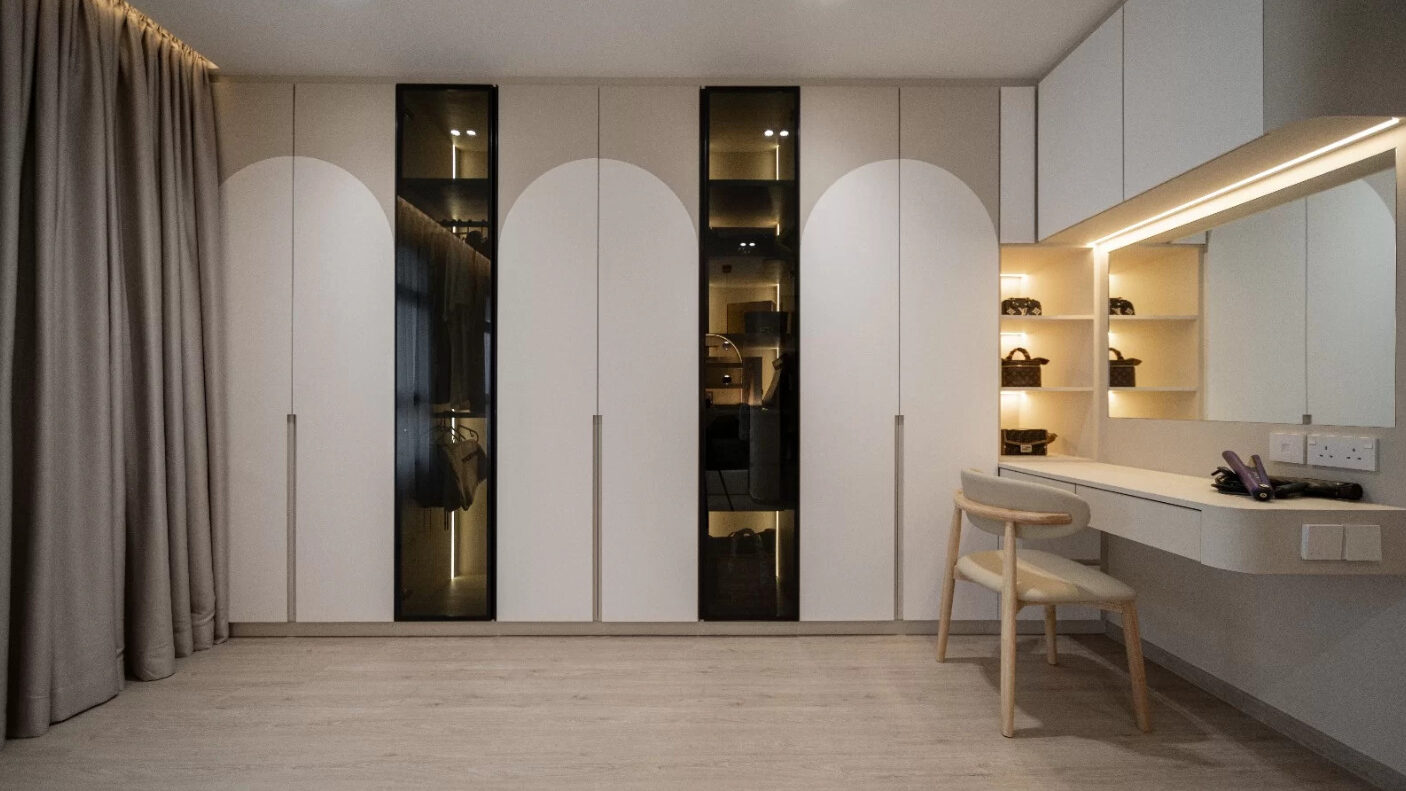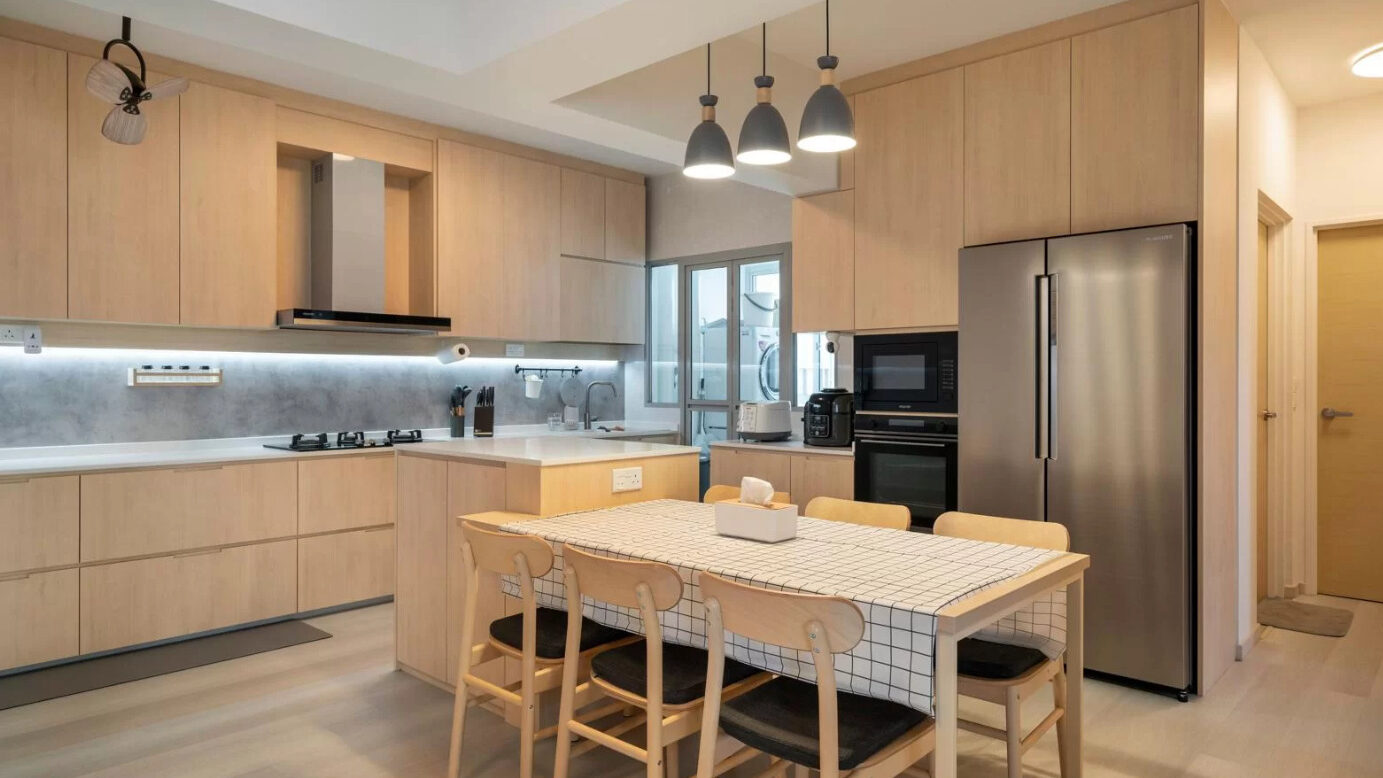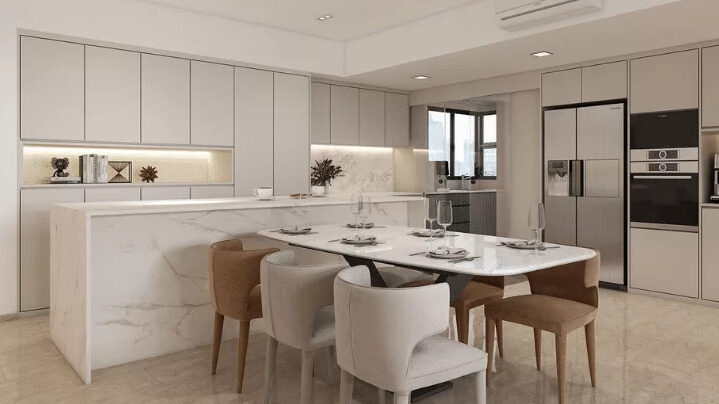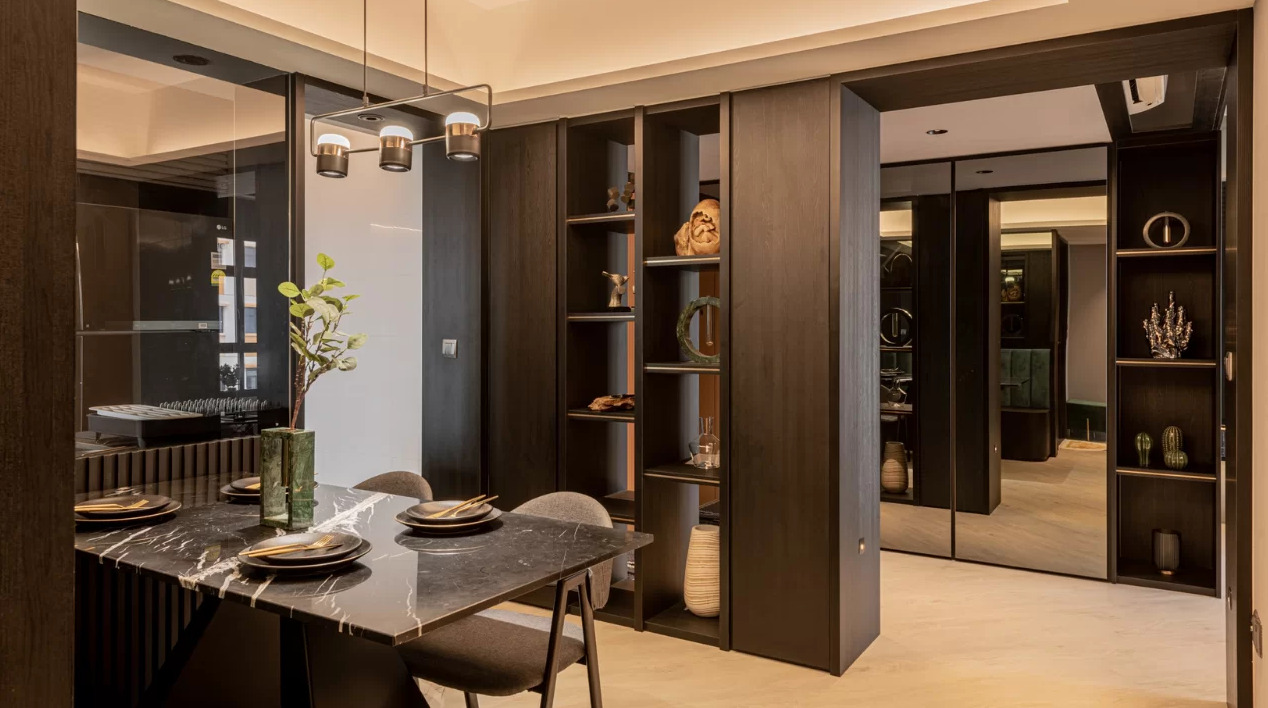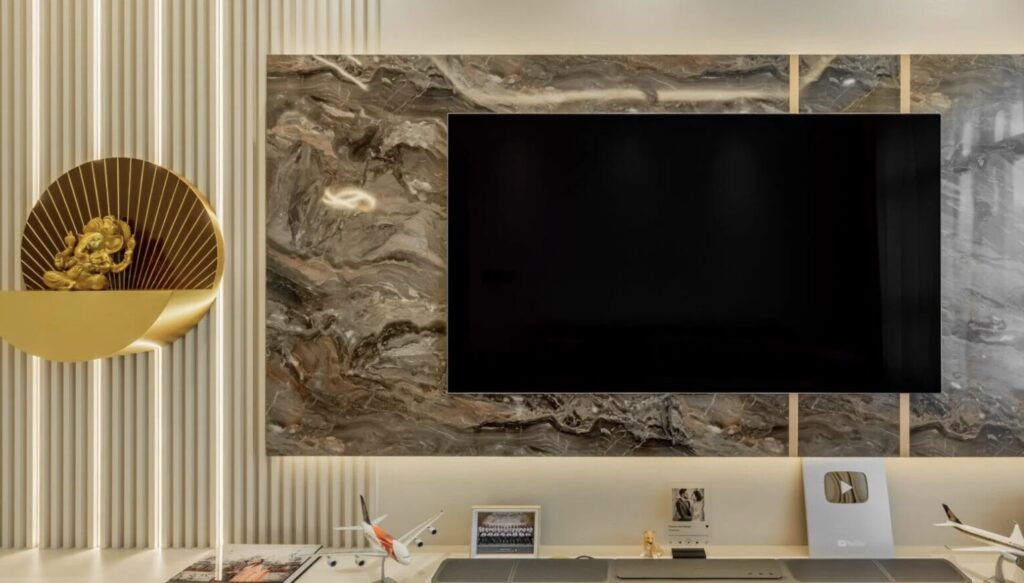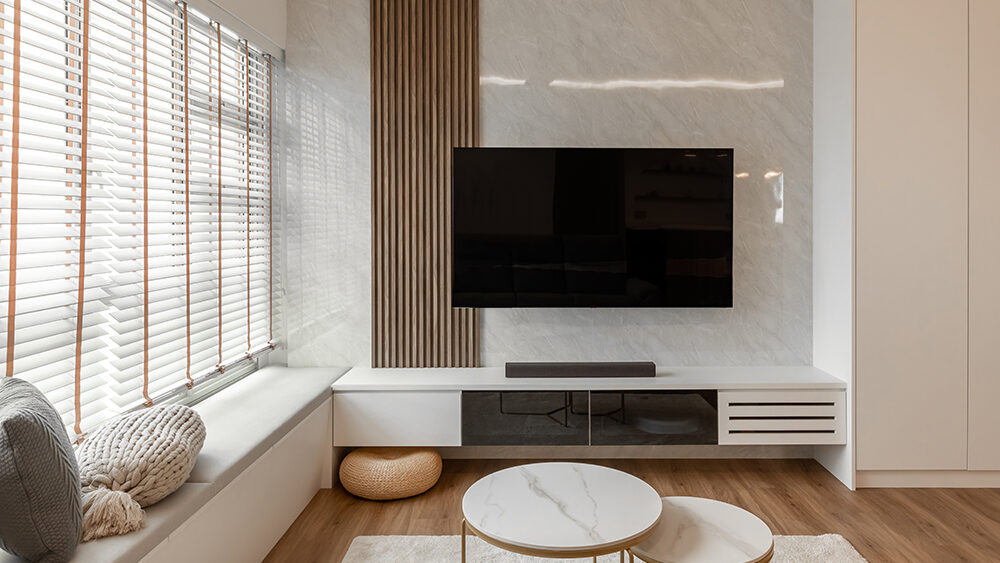Guide to Meeting an Interior Designer in Singapore
| Question | Description | Action Points | References |
| What is the Interior Designer’s Style and Approach? | Understanding the designer’s style and approach is vital as it sets the groundwork for the entire project. |
|
Questions for Your Interior Designer |
| What is the Estimated Cost and Budget? | Discussing the estimated costs can help set realistic financial expectations and prevent surprises. |
|
Saving Tips on Home Renovation |
| What is the Expected Timeline for the Project? | Time estimation helps in planning and managing the project schedule more efficiently. |
|
Guide to Project Timelines |
| Can You See Examples of Previous Work? | Reviewing the designer’s previous work helps assess their capability and compatibility with your vision. |
|
Stunning Renovation Ideas |
| What is Included in the Design Services? | It is important to clarify what services are included to understand the scope of work and any additional responsibilities. |
|
Service Inclusions |
When planning to meet an interior designer in Singapore, it’s crucial to have a clear idea of what to discuss and consider. Here are the five most asked questions that you might need to address during your meeting.
1. What is the Interior Designer’s Style and Approach?
Understanding an interior designer’s style and approach is foundational when choosing the right professional for your project. The designer’s style will greatly influence the final look and feel of your space, and their approach will affect how the project unfolds from start to finish. It’s beneficial to ask the designer about their aesthetic preferences and how they adapt their style to meet the client’s needs. For instance, some designers might favour a minimalist interior design, while others might lean towards creating a more eclectic or luxurious environment, depending on the latest interior trends.
It can be insightful to inquire about the methodologies they use in their design process. Do they start with mood boards, material samples, or digital renderings? Understanding their workflow helps you gauge how your collaboration will proceed. This knowledge will also give you a sneak peek into how structured and organised the designer is, which is crucial for efficient project management and timely completion.
Moreover, you should also ask whether the designer prefers a collaborative approach or if they take the lead with minimal client intervention. Some homeowners prefer being heavily involved in the decision-making process, while others may be more inclined to leave the creative decisions to the expert. Knowing where the designer stands in this regard will help you determine compatibility.
Another aspect to explore is how versatile the designer is with different styles. Singapore’s diverse community favors a range of interior design aesthetics from industrial vibes to wood-themed homes. Discussing the designer’s versatility ensures that they are capable of adapting their style to create a space that reflects your personal taste and meets your functional needs.
Being on the same page with your designer about your vision for the space can prevent potential misunderstandings down the road. Don’t hesitate to discuss your lifestyle and how you intend to use the space on a day-to-day basis. For example, someone who works from home might need a well-designed, functional home office, while a family with young children might prioritise safe and durable materials.
When meeting your interior designer, it’s also useful to ask for examples of how they have managed similar projects in the past. This could include before-and-after photos, testimonials from previous clients, and even walkthroughs of current projects if possible. By reviewing their portfolio, you can get a better understanding of their capabilities and whether their previous work resonates with your vision.
In conclusion, discussing the interior designer’s style and approach is crucial because it sets the stage for your entire project. Knowing their processes, their willingness to collaborate, and their ability to adapt to different styles will help you make an informed decision. Also, exploring their past projects can provide valuable insights into their level of creativity and professionalism.
For more insights on choosing the right interior design style, check out our tips for choosing interior designs in Singapore.
2. What is the Estimated Cost and Budget?
Budgeting is a paramount concern for anyone venturing into a home renovation or interior design project. When discussing with your interior designer, having a clear understanding of the estimated cost and budget ensures transparency and helps avoid any financial surprises. It’s beneficial to approach this topic early on in your discussions to set realistic expectations and outline the financial commitment required.
Initially, ask the designer for a rough estimate based on the scope of your project. Interior designers can offer ballpark figures derived from similar past projects. Remember, though, that these figures can vary depending on numerous factors, including materials, the complexity of the design, and the scale of the project. It’s useful to break down the budget into categories like materials, labour, furnishings, and unforeseen contingencies. By seeing this breakdown, you can assess where your money is going and identify areas where you might be able to save or splurge more wisely.
It’s also crucial to quiz your designer about what the estimated budget includes and what it does not. Some designers offer comprehensive packages that cover everything from conceptualization to final implementation, while others might charge separately for different services such as consultations, 3D renderings, or site visits. Knowing what is included in the initial estimate will help in adequately planning for any additional costs that may arise throughout the project.
Discuss potential cost-saving measures with your designer as well. They usually have a network of suppliers and contractors and can sometimes secure discounts on materials and services, helping to stretch your budget further. Furthermore, consider asking them for advice on which elements of the renovation could be undertaken DIY to reduce costs without compromising the overall quality and aesthetic of the project.
When it comes to high-end projects, seeking clarity on whether the designer charges a flat fee or an hourly rate can also impact your budgeting. Flat fees can provide some peace of mind by offering a predictable expense, usually determined by the project’s total cost. On the other hand, hourly rates might be more suitable for smaller projects where the scope is not entirely clear at the outset. Ensuring an open line of communication on this matter can greatly enhance budgeting accuracy.
A contingency plan for unforeseen expenses is a savvy move. Regardless of how meticulously you plan, unexpected costs may arise unexpectedly. Setting aside a portion of the budget as a contingency fund will help you manage these surprise expenses without derailing the entire project. For instance, discovering electrical wiring issues during a renovation could significantly add to the costs, and having a contingency fund ensures that you are prepared for such eventualities.
Moreover, it’s a good idea to understand the payment structure proposed by the designer. Discussing the payment schedule is essential. Will payments be tied to project milestones, monthly progress, or on a lump-sum basis? Establishing a clear payment schedule from the start helps avoid any potential cash flow problems for both you and the designer. It’s also advisable to have all financial agreements well-documented to prevent any misunderstandings later on.
Finally, get insights from your interior designer about potential return on investment (ROI). Certain design elements or upgrades such as an updated kitchen or quality flooring can substantially boost your property’s value. By discussing ROI, you can make informed decisions that not only enhance your living environment but also serve as a wise financial investment in the long run.
To dive deeper into tips for saving money on your renovation, take a look at our home renovation money-saving tips.
3. What is the Expected Timeline for the Project?
When embarking on a home renovation or interior design project, understanding the expected timeline is essential. Knowing how long the project will take from start to finish helps in managing expectations and planning other activities around the renovation process. It’s crucial to have an open and detailed discussion about timelines with your interior designer right from the start to ensure smooth project progression.
Firstly, ask about the estimated duration for each phase of the project, from initial consultations and design development to procurement of materials and actual construction or renovation work. Breaking down the timeline into these phases makes it easier to understand how long each part will take and what dependencies exist. For instance, waiting on imported materials or custom-made furniture pieces might extend the overall timeline, so it’s good to give your designer enough lead time for such specifics.
Understanding the timeline for design approval is another key component. Design iterations and client approvals can sometimes take longer than anticipated, especially if frequent revisions are needed. Having clear communication channels about this part of the process will aid in streamlining approvals and reducing delays.
It’s beneficial to inquire about potential delays and how they might affect the timeline. Factors such as weather conditions, supplier shortages, and unforeseen structural issues can hinder the completion of the project. Discussing contingency plans for dealing with such delays ensures that you and your designer are prepared to manage any unexpected hurdles that might arise during the renovation.
Additionally, ask the interior designer about the time required for sourcing and delivering materials. Some materials may be readily available, while others might come with extended lead times due to shipping or manufacturing schedules. Coordinating material deliveries in a timely manner is critical to keeping the project on track, especially in intricately designed spaces like kitchens and bathrooms, where specific fixtures and fittings play an integral role.
Moreover, setting milestones and regular check-ins throughout the project’s lifecycle can be invaluable. Regular meetings with your designer help keep the project momentum going and ensure that any minor issues are addressed promptly before they snowball into bigger problems. Project management software or shared calendars can be used to track milestones and keep everyone on the same page.
Discuss work hours and days with your interior designer to understand how many hours per day and how many days a week the project team will be working. This will give you a realistic idea of the daily progress you can expect. If the renovation is taking place while you are still living in the home, accommodating your daily schedule with the project work schedule becomes even more critical.
For projects that involve multiple professionals, including contractors, carpenters, and electricians, requesting a detailed Gantt chart from your designer can provide a visual timeline. This chart can outline who does what and when, identifying any overlaps where different teams need to work in tandem. This kind of detailed planning helps in avoiding bottlenecks and ensures a seamless and efficient workflow.
Furthermore, it’s wise to discuss how long the “defects liability period” will be. This is the time after the project’s completion during which the contractor or designer is responsible for fixing any issues that arise. Knowing this period can provide peace of mind, as you’ll have the assurance that any problems encountered post-completion will be promptly addressed.
Lastly, it’s beneficial to understand the timeline for the handover process. Once the renovation or design work is completed, there will likely be a final inspection and handover procedure. Knowing what this entails and how long it will take ensures you can smoothly transition into your newly revamped space without any hitches.
To get more information about planning your project timeline, you can review our step-by-step guide with checklist for home renovation projects.
4. Can You See Examples of Previous Work?
One of the most important steps when selecting an interior designer is to review examples of their previous work. Seeing their portfolio not only allows you to evaluate their design capabilities but also helps you see if their past projects align with your vision. Reviewing past work can provide a wealth of insights into their creativity, attention to detail, and ability to deliver on their promises.
Start by asking the interior designer to show you a diverse portfolio showcasing a variety of design styles and types of spaces they have worked on. This can give you an idea of their versatility and whether they can adapt their designs to different styles and preferences. Look for projects that are similar to what you have in mind for your space. For example, if you are thinking of a minimalist style for your HDB flat, look for similar projects in their portfolio.
In addition to photographs, request to see detailed case studies or project descriptions. These case studies should outline the scope of the project, challenges faced, and how these challenges were overcome. This provides a deeper understanding of the designer’s problem-solving skills and how they handle real-world issues. Moreover, case studies can demonstrate their ability to work within a specific budget and timeline, giving you confidence in their project management skills.
Another aspect to consider is the level of consistency in their work. High-quality designers should show a portfolio where each project, regardless of style, maintains a standard of quality and attention to detail. Consistency is key, as it indicates the designer’s commitment to delivering excellent results every time.
It can also be helpful to ask for references or testimonials from previous clients. This additional information can give you insights into the designer’s working style, professionalism, and reliability. Satisfied clients can provide positive reinforcement of the designer’s skills and affirm your decision. On the other hand, if the designer hesitates to provide references, it could be a red flag worth considering.
When reviewing portfolios, pay attention to the small details that can often make a big difference. Look at the choice of materials, colour coordination, and overall execution of the design concept. It’s the designer’s ability to execute these details well that separates outstanding designs from mediocre ones. In places like kitchens and bathrooms, where functionality is as important as aesthetics, the practical solutions implemented by the designer can be particularly telling.
Furthermore, explore the diversity of spaces they’ve worked on. A well-rounded portfolio includes a mix of residential, commercial, and perhaps even public spaces. This variety can demonstrate the designer’s versatility and ability to adapt their design principles to different functional requirements. It also shows how their designs evolve in alignment with different contexts and spaces.
If possible, ask to visit some of their completed projects in person. Photographs can be deceiving, and seeing the spaces firsthand allows you to experience the spatial layout, materials, and overall ambiance. This is especially useful if the design incorporates unique or unusual features that might not be fully appreciated through photos alone.
Don’t forget to ask about the longevity of their designs. Some designs may look phenomenal right after completion but might not age well over time. Understanding whether the designer chooses materials and design solutions that endure the wear and tear of daily life will assure you that the beauty of your space will be long-lasting.
Lastly, inquire about the before-and-after state of their projects. Transformation photos can be particularly powerful in showcasing the designer’s ability to radically change a space. It’s inspirational to see how different a space can look with professional intervention, and it can give you a clearer idea of the potential for your own space.
Exploring the portfolio of an interior designer is a vital step in choosing the right professional. By thoroughly evaluating their past work, you can make a well-informed decision that aligns with your vision and expectations. To get more ideas about trending designs and get inspired, take a look at 20 stunning renovation ideas by Singapore’s top IDs.
5. What is Included in the Design Services?
Understanding what is included in the design services offered by your interior designer is essential for a smooth and successful project. This knowledge ensures that there is no confusion regarding who is responsible for what aspects of the project, and prevents unforeseen costs and misunderstandings later on. A clear breakdown of the services provided helps you determine the value and comprehensiveness of the designer’s role.
Start by clarifying whether the interior design services include both residential and commercial spaces or if the designer specialises in one area. Knowing the scope of their expertise can help you ensure that they are well-equipped to meet your specific needs. For instance, designing an open concept living room in an HDB flat may require different expertise compared to renovating a commercial space.
Another key service to inquire about is project management. Some interior designers offer end-to-end project management, which includes coordinating with contractors, handling procurement, and overseeing the entire construction process. This comprehensive approach can simplify the renovation process for you, as the designer takes on the responsibility of managing timelines and ensuring that everything runs smoothly.
Additionally, ask about the specifics of the design phase. This should cover initial consultations, concept development, space planning, and design presentations. Some designers might use digital renderings or 3D models to give you a visual representation of the proposed design. These tools can be invaluable in helping you visualise how the final space will look and make informed decisions about design elements.
Explore whether the designer provides custom furniture design or collaborates with furniture makers to create bespoke pieces tailored to your space. Custom furniture can elevate the uniqueness and functionality of your home, seamlessly fitting into the design concept. If this service is included, you can work closely with the designer to ensure that every piece complements the overall aesthetic.
Moreover, installation services are another important aspect to consider. Check if the interior designer handles the installation of fixtures, fittings, and other custom elements. This involves coordination with various tradespeople to ensure that everything is installed correctly and meets the design specifications. Knowing that the designer oversees this process adds an extra layer of quality control to the project.
Lighting design is another specialised service that can significantly impact the ambiance of a space. Ask if the designer provides lighting plans and consultations. Effective lighting can transform the atmosphere of a room, enhance certain design features, and improve functionality. Different spaces may require different lighting solutions, such as task lighting for kitchen workspaces or ambient lighting for living areas.
Furthermore, sustainability and eco-friendliness are growing concerns in interior design. Inquire whether the designer incorporates sustainable practices and materials into their designs. This includes using eco-friendly materials, energy-efficient lighting, and sustainable sourcing practices. Choosing a designer who prioritises sustainability can result in a greener, more environmentally conscious home.
When it comes to renovations, the inclusion of design services for specific areas, such as kitchens and bathrooms, can be crucial. These spaces often require detailed planning and specialised knowledge to optimise functionality and aesthetics. Ensure that the designer’s services cover these critical areas, as they are integral parts of your home that often need the most attention.
It’s also advantageous to understand if the designer provides guidance on obtaining necessary permits and adhering to local regulations. In Singapore, certain renovation works require permits and compliance with HDB rules. Having a designer who can navigate these legal requirements ensures that your project proceeds without regulatory hiccups.
Finally, get clarity on post-renovation services. Some designers offer a defects liability period during which they address any issues that arise after the project is completed. Knowing that the designer provides support even after the project’s completion can offer peace of mind and ensure that your space remains in excellent condition.
By understanding what is included in the design services, you can align your expectations and ensure a smooth collaboration with your interior designer. For more insights on comprehensive design services, refer to our guide on questions you might ask your interior designer.
Are you looking for trusted interior designers? Look no further! Drop us an enquiry at [email protected] and let us help you transform your home into a smart and efficient living space. Our experts are here to assist you in finding the perfect smart home devices to suit your needs and enhance your lifestyle.
Designing your dream home can be an exciting journey, but it can also be overwhelming. With so many options and styles available, it can be challenging to decide what is best for you and your family. However, by considering factors such as functionality, color palette, furniture, materials, and personal style, you can create a space that is not only beautiful but also practical and comfortable.
When it comes to achieving a successful interior design project, choosing a provider with a rock-solid reputation and exceptional skills is paramount. At Redbrick Homes, we understand that inspiration is key. That’s why our top-quality interior design partners are ready to wow you with beautiful, personalized spaces brimming with exceptional Singaporean ideas.
Remember to take your time, do your research, and work with a professional if needed. With the right interior design choices, you can transform your house into a dream home that you’ll enjoy for years to come.


